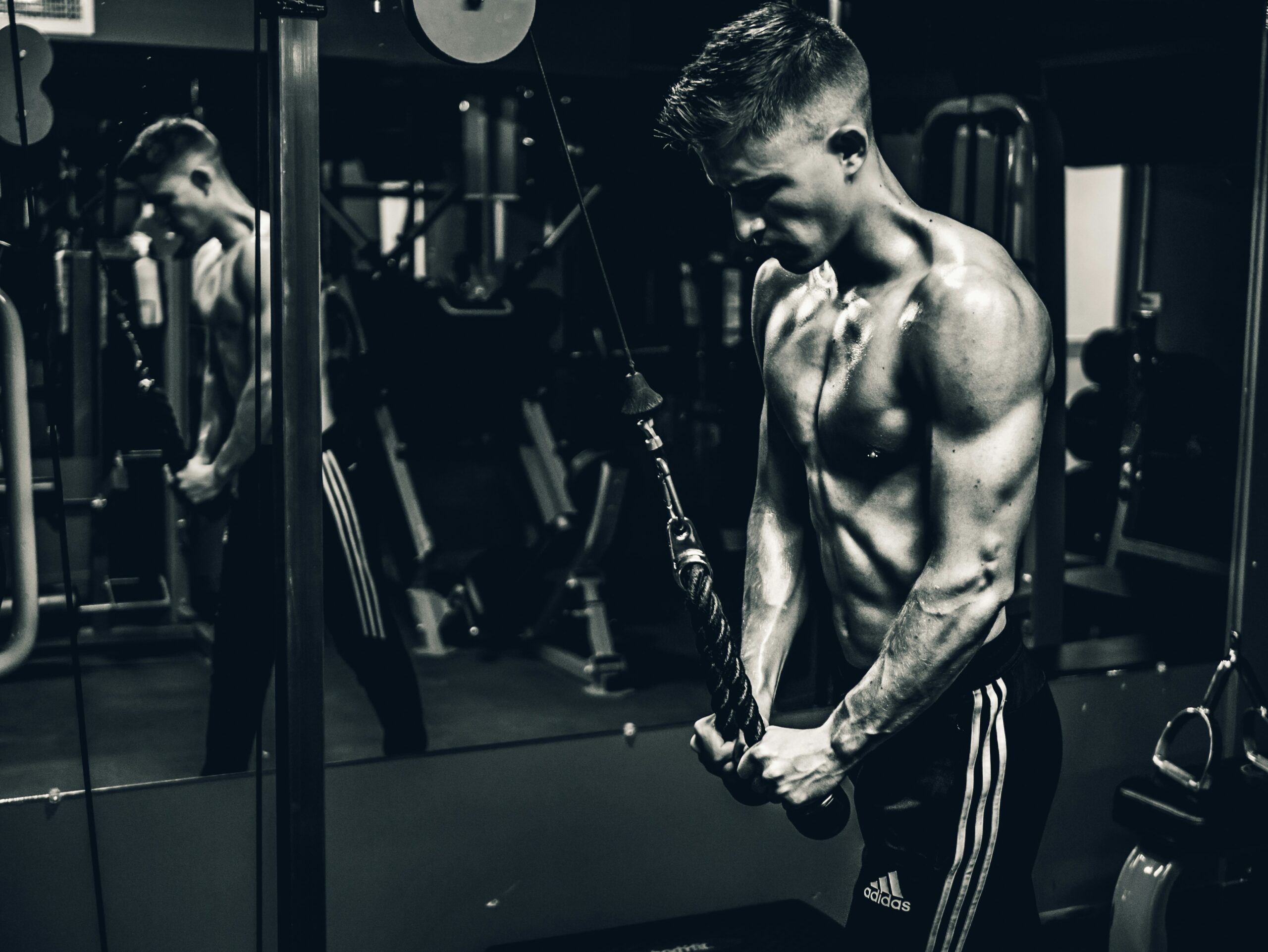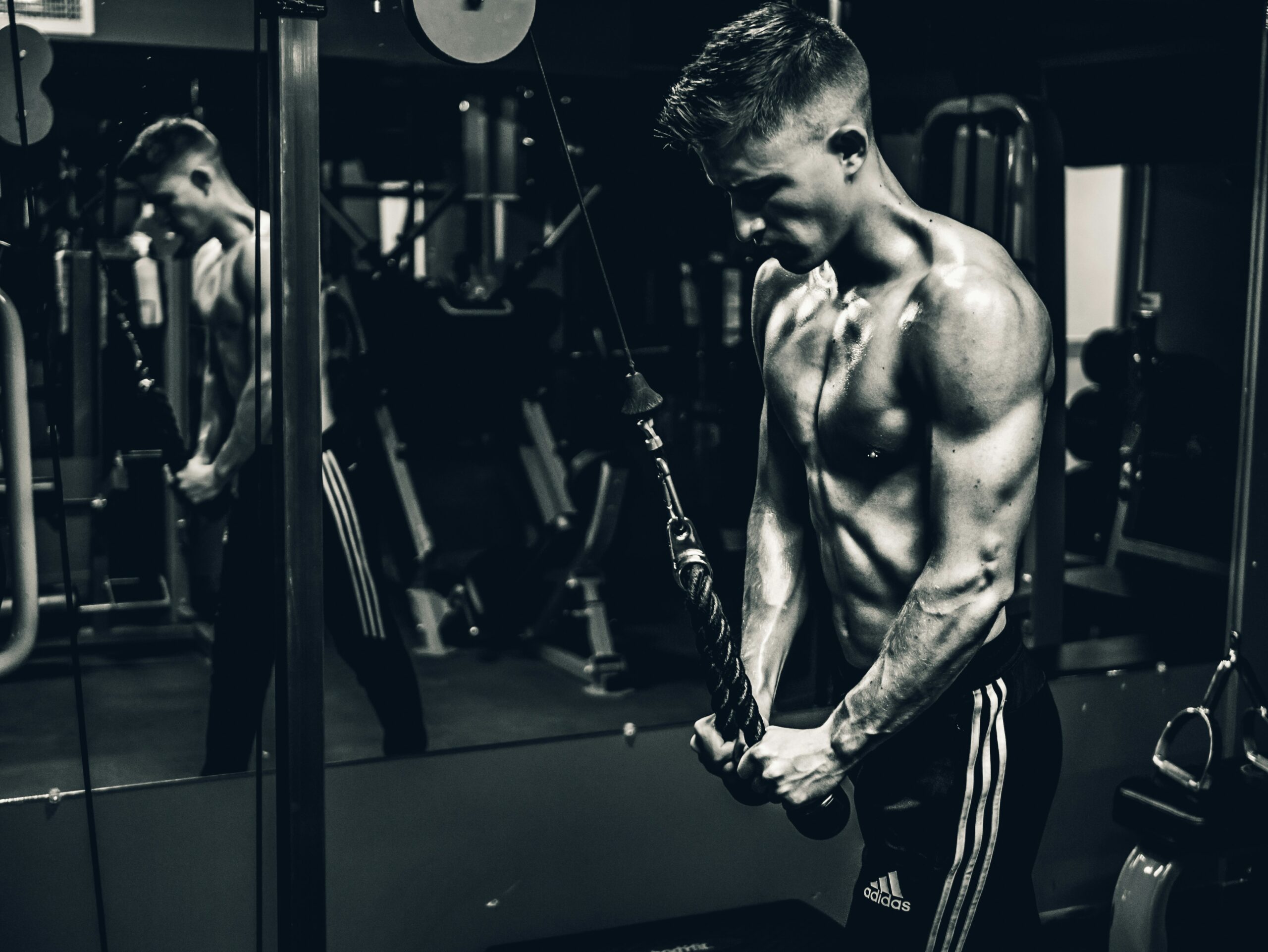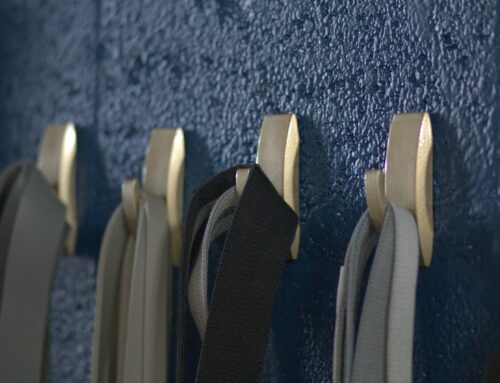

Introduction to Tricep Workouts at Home
Engaging in tricep workouts is integral to developing upper body strength, which plays a crucial role in daily activities and overall physical fitness. The triceps brachii, commonly known as the tricep muscles, are composed of three heads: the long head, the lateral head, and the medial head. Each of these heads contributes uniquely to arm movements and stability. By targeting all three heads through varied exercises, one can achieve balanced arm development and enhance functional strength.
Performing tricep workouts from the comfort of your home offers numerous benefits, primarily convenience and minimal equipment requirements. With the ability to exercise on your schedule, without needing to commute to a gym, at-home workouts ensure that maintaining a consistent training routine is more manageable. Additionally, most effective tricep exercises can be done using bodyweight, negating the need for extensive or expensive gym equipment. This makes tricep workouts not only accessible but also cost-effective.
Equipping yourself with basic items like a sturdy chair or bench, resistance bands, or even just a clear space can enable a comprehensive workout. The versatility of tricep exercises allows you to target the three heads from various angles and movements, leading to better muscle engagement and strength gains. For those looking to improve their overall arm aesthetics, toned and well-defined triceps play a significant role, as they make up a large portion of the upper arm mass.
In an era when many individuals are working from home or have busy schedules, finding sustainable ways to stay active is essential. Focusing on home-based tricep workouts can contribute significantly to an individual’s overall fitness regime by enhancing upper body strength, improving endurance, and contributing to a more sculpted physique. Whether you are a beginner or an experienced fitness enthusiast, incorporating tricep exercises into your at-home routine can yield remarkable results.
Warm-Up Routine
A well-structured warm-up routine is integral to preparing your triceps and overall upper body for an effective workout. It not only primes your muscles for exercise but also reduces the risk of injuries and enhances your overall performance. As with any training session, starting with a proper warm-up ensures your body is ready to handle the demands of tricep workouts. Below is a step-by-step warm-up routine tailored specifically for activating the triceps and engaging the upper body.
Begin with five to ten minutes of light cardio to get your blood flowing. This can include activities such as jumping jacks, brisk walking, or jogging in place. Following this, incorporate dynamic stretches that focus on the shoulders and arms. Arm circles are a simple yet effective movement for this purpose. Extend your arms to the sides and make small circles, gradually increasing the size of the circles. Perform this motion for about 30 seconds in each direction.
Next, target the shoulder muscles with some shoulder stretches. One effective stretch involves pulling one arm across your chest and holding it with your other arm for about 15-20 seconds on each side. This helps to stretch the deltoid muscles, which are crucial for upper body movements and stability. Additionally, include tricep-specific stretches, such as the overhead tricep stretch, where you reach one arm overhead and bend the elbow, using the opposite hand to gently push the bent arm back.
Incorporating these dynamic movements and stretches into your routine ensures your triceps and supporting muscles are adequately warmed up. This, in turn, leads to a safer and more efficient workout session. Remember, consistency in your warm-up practices promotes long-term benefits, including improved flexibility and muscle resilience, thereby enhancing your overall fitness journey.
Basic Tricep Dips
Basic tricep dips are an effective way to strengthen and tone the triceps using minimal equipment, making them ideal for home workouts. This exercise predominantly targets the triceps, but it also engages the shoulders and chest, contributing to overall upper body strength. To perform a basic tricep dip, you will need a sturdy surface such as a chair, bench, or even the edge of a bed.
Begin by positioning your hands shoulder-width apart on the edge of the chosen surface, fingers facing forward. With your legs extended straight out in front of you, slide your body forward so that your back is close to the surface and your arms are fully extended. Slowly lower your body by bending your elbows, keeping them pointed backward rather than out to the sides. Continue lowering until your upper arms are about parallel to the ground, then press back up to the starting position while ensuring your elbows do not lock out.
Variations of the tricep dip can be performed to accommodate different fitness levels. For beginners, bending the knees to bring the feet flat on the floor can reduce the amount of weight on the arms, making the dip easier to perform. For those seeking a challenge, elevating the feet on another chair or surface will increase the intensity by engaging the core and lower body muscles as well. Additionally, single-leg tricep dips can further enhance balance and stability requirements.
Proper form is crucial to avoid injury and maximize the effectiveness of tricep dips. Common mistakes to avoid include flaring the elbows outward, dipping too quickly, or not lowering the body far enough to engage the triceps effectively. Maintaining a controlled, steady motion throughout each rep ensures that the triceps are adequately targeted and reduces the strain on the shoulder joints.
Including tricep dips in your workout routine can provide numerous benefits, such as increased arm strength, enhanced muscle definition, and improved overall upper body conditioning. Regularly performing this versatile exercise can help build stronger, more toned triceps without the need for expensive equipment or gym access.
Close-Grip Push-Ups
Close-grip push-ups are an exceptional bodyweight exercise specifically designed to target the triceps. Unlike regular push-ups, where the emphasis is often distributed between the chest, shoulders, and triceps, the close-grip variation intensifies the load on the triceps, making it a powerful exercise for strengthening this muscle group.
To execute a close-grip push-up, begin by assuming the standard push-up position with your hands placed directly under your shoulders. Then, bring your hands closer together so that your thumbs and index fingers form a triangle or diamond shape on the floor. Ensure your body is in a straight line from head to heels, avoiding any sagging in the back or lifting of the hips.
Lower your body by bending your elbows, keeping them tucked close to your sides to maximize tricep engagement. Inhale as you lower your chest until it almost touches the floor. Exhale as you push back up to the starting position, fully extending your elbows without locking them. Maintaining a controlled tempo is crucial to effectively target the triceps and prevent injury.
For beginners, starting with knee-assisted close-grip push-ups can help build foundational strength. Simply drop your knees to the ground while keeping the rest of your alignment intact. This reduces the resistance, making the exercise more manageable. As you progress, gradually shift to the traditional close-grip push-up on your toes.
Advanced practitioners can enhance the difficulty of close-grip push-ups by elevating their feet on a stable platform. This variation increases the intensity and further challenges the triceps. Additionally, incorporating plyometric movements, such as clapping between reps, can boost power and explosiveness.
The advantages of close-grip push-ups extend beyond just building the triceps. They also improve core stability and shoulder strength, making them a well-rounded exercise for those seeking comprehensive upper body development. Including close-grip push-ups in your workout routine, alongside other bodyweight tricep exercises, can significantly enhance your overall muscular endurance and strength levels.
Triangle Push-Ups
Triangle push-ups, also known as diamond push-ups, are an excellent bodyweight exercise targeting the triceps. This workout effectively isolates the tricep muscles, making it a valuable addition to any home exercise routine. Below is a detailed guide on how to perform triangle push-ups correctly, along with tips for modifications and progression.
To begin, assume a standard push-up position with your body forming a straight line from head to heels. Next, place your hands directly under your chest, bringing your index fingers and thumbs together to form a triangle or diamond shape. Ensure that your hands are positioned such that your thumbs and index fingers touch. This unique hand placement is crucial as it enhances tricep activation throughout the motion.
From this starting position, brace your core and engage your glutes to maintain a solid plank posture. Slowly lower your chest towards your hands by bending your elbows. Keep your elbows close to your torso to emphasize the tricep muscles. Lower yourself until your chest nearly touches your hands, then pause momentarily to enhance muscle engagement. Push through your palms to extend your arms and return to the starting position. Repeat this movement for desired repetitions, ensuring controlled and steady motions to maximize effectiveness.
If triangle push-ups prove too challenging initially, consider modifications to build strength gradually. One modification is to perform the exercise on your knees instead of keeping your legs straight. This will reduce the resistance, making it easier to complete the movement while maintaining proper form. Alternatively, you can elevate your hands by placing them on a stable surface such as a bench or step; this elevation decreases the amount of body weight you lift, providing an easier entry point.
To increase the difficulty of triangle push-ups, you can place your feet on an elevated surface, such as a chair, to add resistance. Another option is to wear a weighted vest, which can progressively overload the triceps for enhanced muscle growth and strength. By consistently implementing these progressions, you can challenge your triceps and foster substantial muscular advancements over time.
Tricep Extensions Using Bodyweight
Tricep extensions are a highly effective exercise that can be performed without any specialized equipment, utilizing only your bodyweight. One particularly accessible and efficacious variation is the wall tricep extension. This exercise is ideal for individuals at different fitness levels, providing an opportunity to focus on tricep isolation and strengthening.
To begin with the basic wall tricep extension, stand at an arm’s length away from a wall and place your hands shoulder-width apart against the surface, ensuring your fingers are pointing upwards. Lean forward slightly, keeping your body aligned from head to heels. Bend your elbows with control, lowering your forehead towards the wall. Push through your palms to extend your arms, bringing yourself back to the starting position. This motion isolates the triceps, ensuring a targeted workout.
For those seeking to modify the intensity, adjustments can be made. Beginners may start closer to the wall and progress by increasing the distance as strength improves. Conversely, if you’re looking to enhance the challenge, adding a single-leg stance increases the demand on your core and stabilizing muscles. Alternatively, placing hands at a lower position increases the range of motion and further intensifies the exercise.
There are significant benefits to incorporating wall tricep extensions into your routine. This exercise is excellent for muscle isolation, focusing directly on the triceps without overburdening other muscle groups. Additionally, it aids in improving upper body endurance and strength, which can help with daily activities and other physical exercises. Furthermore, wall tricep extensions offer flexibility in scaling, making them accessible for all fitness levels and a perfect addition to a home-based workout regimen.
Advanced Moves: Planche Push-Ups & Pike Push-Ups
For those looking to elevate their bodyweight tricep workouts, planche push-ups and pike push-ups serve as potent advanced exercises that task both your triceps and upper body strength. These moves not only push the boundaries of tricep engagement but also contribute significantly to overall upper body conditioning.
Planche Push-Ups are an elite level exercise that demands substantial strength and balance. Before attempting planche push-ups, it is crucial to build a solid foundation through several progression steps. Begin with the planche lean, where you lean forward on your hands while keeping your arms straight, engaging core and shoulder muscles. Next, advance to tuck planches, with knees bent close to your chest, gradually shifting to a more extended leg position. Continuous practice and gradual load increase will prepare you for the full planche push-up where your body is parallel to the floor, supported solely by your hands.
The engagement of the triceps in the planche push-ups is exceptionally high due to the extended arm positioning and the body’s levering angle. Additionally, the exercise works wonders for your shoulders, chest, and core, establishing a comprehensive upper body workout.
Pike Push-Ups serve as another progressive bodyweight tricep exercise, ideal for honing shoulder and tricep strength. Start with the basic downward dog position, pushing your hips upwards while keeping your body in an inverted V-shape. This position helps you familiarize yourself with weight distribution across your upper body. Proceed to wall-assisted pike push-ups to bolster shoulder and core stability. Gradually, once strength and balance are significantly improved, move to freestanding pike push-ups.
Pike push-ups emphasize the triceps and shoulders, as the inverted position intensifies the load on these muscle groups. Enhanced proficiency in pike push-ups not only asserts tricep development but also boosts shoulder mobility and control.
Mastery of advanced exercises like planche push-ups and pike push-ups signifies remarkable upper body strength, specifically targeting tricep muscles comprehensively. These dynamic movements are quintessential for those aspiring to achieve superior bodyweight fitness levels.
Cooldown and Stretching
Completing your tricep workout with a proper cooldown session is essential for muscle recovery and reducing post-exercise stiffness. A well-structured cooldown routine helps to gradually lower your heart rate, improve flexibility, and prevent muscle soreness. Here, we focus on static stretching exercises that specifically target the triceps and upper body.
Begin with an overhead tricep stretch. To perform this stretch, start by standing up straight, then raise your right arm overhead and bend the elbow so that your hand reaches the middle of your back. Use your left hand to gently press on your right elbow, pushing it further behind your head. Hold this stretch for 20-30 seconds, ensuring you feel a gentle pull in your tricep. Repeat on the other side.
Next, incorporate a cross-body shoulder stretch. Stand upright and extend your right arm across your chest. Use your left hand to pull your right arm closer to your chest, stretching the shoulder and tricep muscles. Maintain this position for 20-30 seconds before switching arms. This stretch helps alleviate tension in the shoulders and triceps, promoting relaxation.
Another beneficial stretch is the standing tricep stretch. To execute this stretch, interlace your fingers behind your back with your arms extended. Slowly lift your hands upward and away from your body while keeping your arms straight, opening up your chest and stretching your triceps. Hold this position for 20-30 seconds, making sure not to overstretch.
Finally, do not overlook the importance of full upper body stretches, such as the child’s pose from yoga. Kneel on the floor, sit back on your heels, and extend your arms forward on the ground. Gently press your chest towards the floor, feeling a deep stretch in your shoulders, triceps, and back. Hold the pose for up to 1 minute, breathing deeply and steadily.
Regularly practicing these cooldown and stretching exercises post-workout will significantly contribute to muscle relaxation, recovery, and overall flexibility. Making cooldown an integral part of your tricep workouts ensures that you gain the maximum benefits from your exercise routine while minimizing discomfort and potential injury.
About the author : Tricep
We valued your need and thought . Main aim is to keep you fit with our suggestion and help let have a lifestyle
Latest videos
The Vital Role of Exercise in Maintaining Our Health
Understanding Exercise and Its Impact on HealthExercise is a cornerstone of a healthy lifestyle, often regarded as a vital factor in promoting overall health and well-being. Engaging in regular physical activity not only enriches the [...]
The Role of Triceps in Bench Press: Maximize Your Gains
```html Understanding the Bench Press and Its Muscle Groups The bench press is a compound exercise, revered in the strength training community for its ability to enhance upper body power and muscle development. At its [...]
Join our mailing list today
Insider offers & flash sales in your inbox every week.
Curabitur non nulla sit amet nisl tempus convallis quis ac lectus dolor sit amet, consectetur adipiscing elit sed porttitor lectus.









